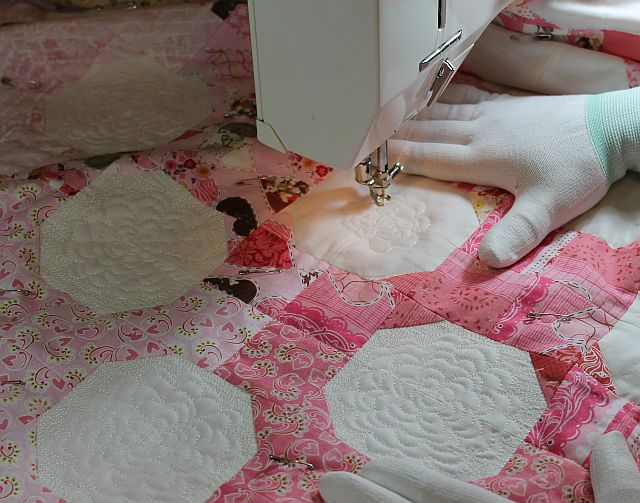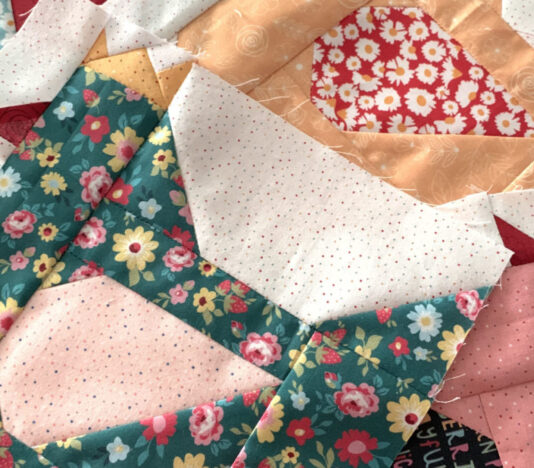Kisses Quilt Patchwork is a modern patchwork technique created by designer Carolyn Friedlander. This technique is designed to create single heart hugs, kisses and hearts, and is extremely easy to learn.
The technique works by using two different sizes of patchwork blocks placed side by side to form a patchwork blush. Pattern is added by choosing colors and patterns to work together to form each individual heart. The hearts are then interspersed with scraps of fabric to create a patchwork effect.
Kisses Quilt Patchwork is perfect for projects that require more complicated and detailed patchwork, as it allows you to use different colors and patterns to create your blocks and hearts. In addition, it can also be used for fun and creative projects, such as creating patchwork with leftover fabric scraps.

To create this modern patchwork, you’ll need scraps of fabric and a set of sewing supplies. Some more complex projects may also require a sewing machine, pins, thread, needles, a mask, fabric cutter, and more.
Where the Kisses Quilt Patchwork
Origins is a classic patchwork quilt that dates back to the days of traditional quilts in the 17th and 18th centuries. It is particularly popular in England, being first mentioned in a book from 1730. According to tradition, the Kisses Quilt Patchwork was originally created with the intention of being used in wedding gifts as a gesture of good luck.
The quilt is made with scraps of different patterns, materials and colors with motifs in the form of hearts, kisses and wedding rings, forming a visually attractive grid. Since then, the technique used to produce this quilt has spread throughout the world.
What are the advantages of learning Kisses Quilt Patchwork
The art of patchwork is used to create beautiful designs worked in geometric shapes and form squares. This form of handicraft gives practitioners arts and sewing skills. It also requires patience, dedication, and fundamental organizational skills that help you follow the complex patterns that are used.
Learning Kisses Quilt Patchwork brings the following advantages:
1. Basic Sewing Skills. Learning Kisses Quilt Patchwork requires the ability to use sewing machines and fixtures to confirm garment designs. This skill develops basic sewing skills.
2. Possibility of variety in project development. When you learn to quilt patchwork, you acquire skills to perform many types of work worked with dexterity and mastery. This includes both basic work and more complex projects.
3. Development of imagination. The art of patchwork paves the way for unleashing the creativity of all those who practice it. Thousands of patterns, colors and textures are possible. Learning Kisses Quilt Patchwork allows students to develop unique and original works.
4. Learning new techniques. In addition to the basic types of patchwork, there are many other techniques to explore. Learning Kisses Quilt Patchwork opens up opportunities for the student to venture into advanced patchwork techniques such as blade cutting, card weaving, basic traditional techniques, and much more.
5. Recognition of the value of handicrafts. Craftsmanship has become less practiced in recent times, but that doesn’t mean it should go away. The art of patchwork offers practitioners an opportunity to keep the tradition of stitchery alive by sharing and admiring the work of others.
Kisses Quilt Patchwork | step by step to do
1. Select the fabric you want to use for your Kisses Quilt Patchwork.
2. Place the fabrics on top of the middle of the table so that each one is visible.
3. Draw a rectangular pattern for each desired block measuring about 10 inches long and 6 inches wide. Use the pencil to make the lines on the fabric’s corners and edges.
4. Cut the rectangles with sewing scissors, then use chalk to mark the lines of the pieces on the fabric.
5. Sew the four ends of the blocks together at an angle. Use 2.5mm and straight stitches to create the blocks.
6. Place some stuffing between the ends of the blocks and machine sew them.
7. Fold each block in half, right to right.
8. Use the sewing needle to line up all your patchwork blocks and sew the ends right to right.
9. To finish off your Kisses quilt, cut a piece of the fabric you chose for the middle of the quilt. Measuring approximately 10 inches long and 6 inches wide.
10. Thread to curl the corners out and machine sew the center cap of the quilt.
11. Now you can add the quilt hems. To do this, cut strips of fabric that will measure about 2 inches wide and 10 inches long, make marks and sew diagonally.
12. Finally, apply or embroider the outline around the entire quilt, in order to hide the edges of the sewn hem.

Deixe um comentário